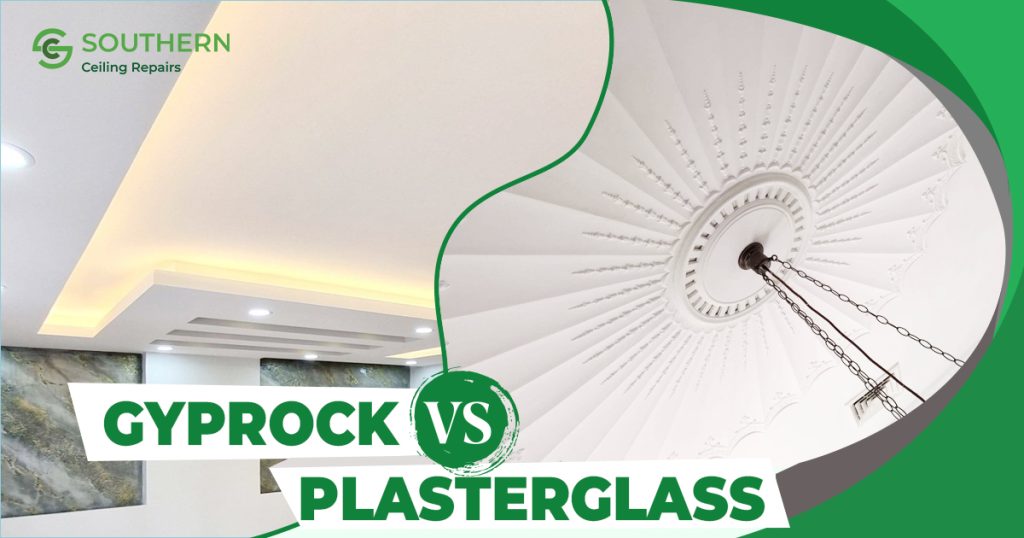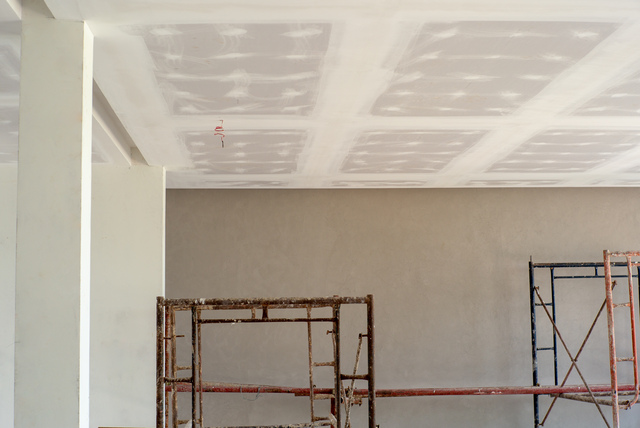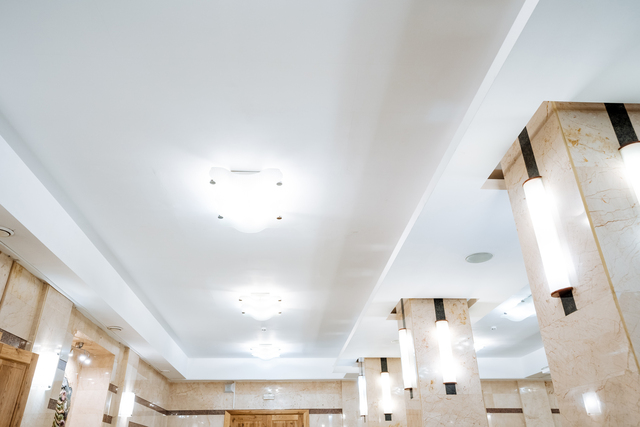
When it comes to ceilings, many Aussie homeowners focus on lighting, insulation, or decorative touches — but rarely consider the actual ceiling materials. Choosing the right materials like Gyprock and Plasterglass can significantly affect your home’s look, energy efficiency, and durability.
Two of the most common materials used in Australian homes are Gyprock and Plasterglass. While both serve the same basic purpose — forming the flat surface above your head — they differ significantly in cost, appearance, performance, and installation. So, which one is better for your home?
Whether you’re renovating, building new, or repairing sagging ceilings, this guide will walk you through the pros and cons of Gyprock and Plasterglass so you can make a confident, well-informed choice.

What is Gyprock?

Gyprock, also known as plasterboard or drywall, is the go-to ceiling material in modern Australian construction. It’s made by sandwiching a layer of gypsum between two sheets of thick paper. The result is a lightweight, prefabricated board that’s easy to cut, transport, and install.
Gyprock ceilings are popular in both new builds and renovations because they’re quick to install, cost-effective, and give a clean, smooth finish. They’re ideal for standard flat ceilings and suit contemporary home designs where decorative detailing is minimal.
Builders and ceiling fixers love Gyprock for its versatility and ease of use — making it the default choice for most Aussie homes.
What is Plasterglass?

Plasterglass is a more traditional and robust ceiling material, made from a mix of plaster and reinforcing fibres such as hessian or fibreglass. It’s often moulded by hand or cast into large sheets and lifted into place by experienced tradespeople.
This material is most commonly found in heritage homes or properties that feature ornate cornices, ceiling roses, and other detailed plasterwork. It offers a more solid, durable finish than Gyprock and is far less prone to sagging over time.
Plasterglass takes longer to install, and due to the skill required, it’s typically more expensive. However, for homeowners wanting long-lasting durability and classical beauty, plasterglass remains a top-tier option.
Pros and Cons of Gyprock Ceilings
Pros:
- Cost-effective: One of the cheapest ceiling materials available
- Quick installation: Ideal for tight deadlines and budget renovations
- Lightweight: Easier to transport and install in most home structures
- Readily available: Easy to find replacement sheets or repairs
Cons:
- Less durable: More prone to cracking or denting over time
- Moisture sensitivity: Can suffer damage in humid or damp environments
- Limited detail: Not suitable for intricate cornice work or decorative finishes
Gyprock is great for straight, simple ceilings in standard residential homes — especially when budget and speed are top priorities.
Pros and Cons of Plasterglass Ceilings
Pros:
- Exceptional durability: Less prone to cracking and sagging
- Sound insulation: Offers better acoustic performance than Gyprock
- Aesthetic quality: Allows for detailed moulding, cornices, and classical features
- Fire resistance: Naturally more fire-resistant than many lightweight options
Cons:
- Higher cost: Both materials and labour are more expensive
- Heavier weight: Requires strong ceiling framing and professional installation
- Longer installation time: Not ideal for quick renovations
If you own a heritage home or want a premium finish with longevity, Plasterglass is the better investment — though it will stretch your budget more than Gyprock.
Cost Comparison in Australia (2025)
Here’s what you can expect to pay for each ceiling material in 2025:
| Material | Cost Per m² (Installed) | Best For |
| Gyprock | $10 – $20 | Budget-friendly, modern ceilings |
| Plasterglass | $20 – $70+ | Decorative, durable ceilings in classic homes |
Labour for plasterglass can be up to double that of Gyprock due to the specialised skill required. Materials like ornate cornices or ceiling roses also add to the price.
Don’t forget that regional pricing can vary:
- WA regional areas (like Albany or Denmark) tend to be more affordable.
- Metro areas (Sydney, Melbourne) generally cost more due to labour demand.

Which One Should You Choose?
The best ceiling material depends on your home and your goals. If you’re building new or renovating a modern space, Gyprock is likely your best bet — it’s affordable, quick to install, and easy to maintain. It’s especially ideal if you’re working to a budget or timeline.
On the other hand, if you’re restoring a heritage home or want a ceiling with ornate detail and superior strength, Plasterglass is worth the extra investment. It delivers a premium finish and better long-term performance, especially in large rooms or period properties.
Final Thoughts
Whether you’re patching up a ceiling, planning a full renovation, or building from scratch, your choice between Gyprock and Plasterglass will shape both the look and performance of your ceilings for years to come.
Gyprock wins for speed, affordability, and convenience. Plasterglass excels in durability, acoustic insulation, and timeless beauty.Still unsure? It’s best to talk to a local ceiling expert like Southern Ceiling Repairs — they’ll assess your space, offer tailored advice, and make sure your ceiling stands the test of time (and Aussie weather). Feel free to check out on Facebook Page.
